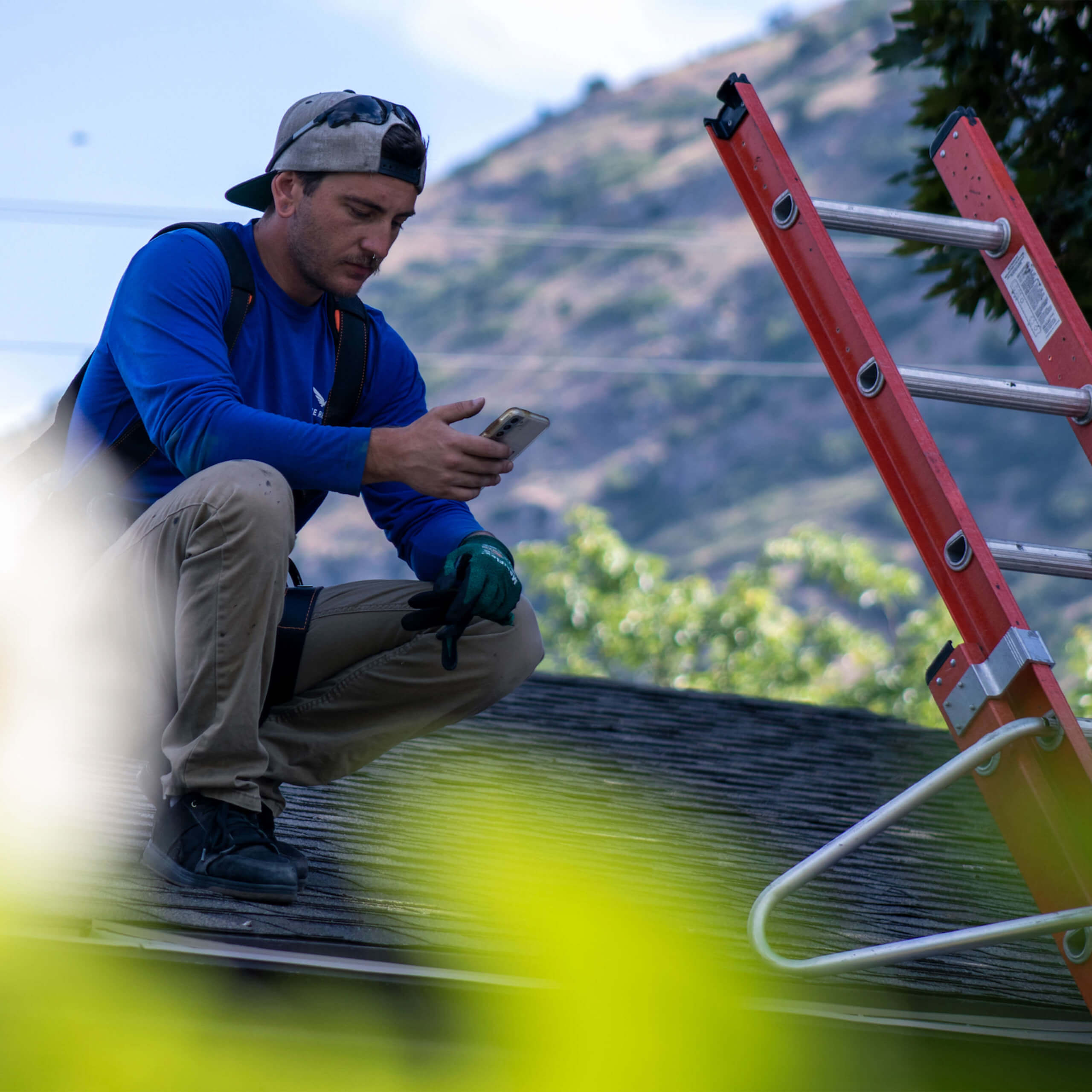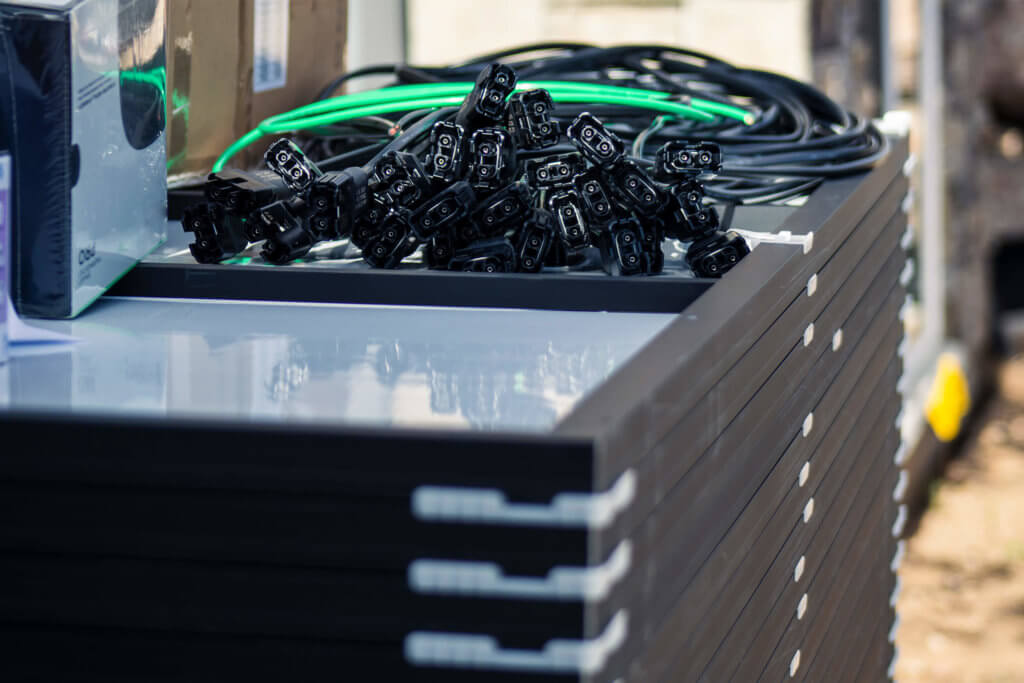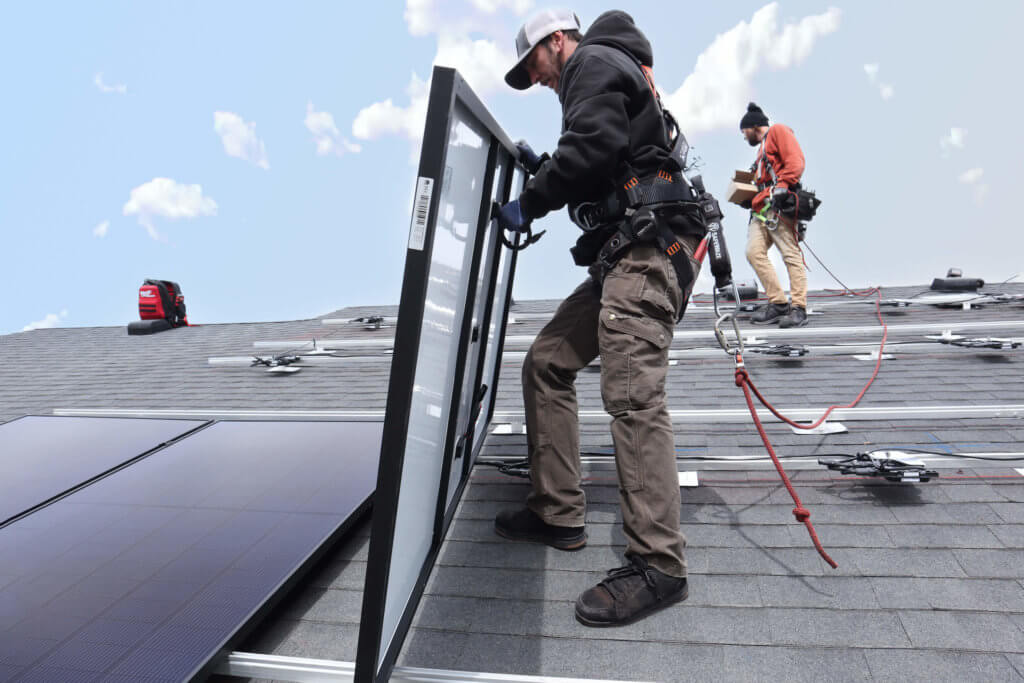
A solar system consists of numerous components all playing a key role in providing solar power to a building. Learning about each of these different components might not seem like a simple task, but we know you do not need anything confusing around your decision to go solar. So, we decided to break down some solar panel options for you.
In every system, there are some basics that will be there no matter what. Here are their simple definitions:
- Solar panels gather energy from the sun in kilowatts.
- Inverters convert direct current power from the solar panels and batteries into alternating current power for appliances.
- Mounting racks attach the panels to your building’s roof, poles, or the ground.
- Power, utility, and kilowatt meters measure the amount of power sent to the utility grid; measures the amount of power used from the utility grid.
- AC, breaker, and circuit breaker panels join the system’s power source to electrical circuits in the building.
Out of all these components, solar panels are the most visible and the most important. But it can be hard to know what panels are best for your home and specific needs.

How Solar Works
Solar panels use a complex yet ecologically friendly process to convert the sun’s rays into energy. It starts with layers of silicon pressed together, but silicon is not great for conducting electricity. To help generate an electrical field, the layer on top is treated to generate a negative charge and the other layer underneath is treated to generate a positive charge. This is what allows a flow of electrons to conductive plates.
When the sun’s rays hit the top layer, photons knock electrons off the negatively charged silicon and, thanks to the electrical field at the junction of both layers, those electrons go from the field to metal plates. Those plates collect the electrons and run them down wires and create electricity! That direct current energy runs to the inverter and converts to alternating current, which is what is used to power your home. This process is called the photovoltaic effect, and solar panels are sometimes referred to as PV panels.
Because of their eco-friendly design and capabilities, solar panels are durable and easy to maintain. Even when they are buried under heavy snow or pelted by hailstones, solar panels can last through punishment and continue to generate electricity for decades. This is one of the many reasons they are increasingly installed on new homes, offices, schools, and other structures. They are an option that saves both on natural resources and costs, with little supervision or maintenance.
Solar panels offer a high return on investment by lowering owners’ energy bills and avoiding the costly repairs found with traditional energy systems used in buildings. But there are a couple of diverse ways to manufacture solar panels and they each have their benefits.

Mono or Poly?
The solar panels available to the public today come in two primary models: polycrystalline (poly) and monocrystalline (mono).
Poly solar panels are typically blue and are made from raw silicon that is poured into square molds. Once the silicon is cooled, it is then cut into square wafers. These panels offer several advantages, appealing to people who want to install a solar system in their home or business:
- Low in cost, allowing most home and business owners to easily afford them. This is because of how they are built. The “poly” part of the name refers to how their panels are made with each cell using multiple fragments of silicon, rather than a single silicon crystal like monocrystalline panels.
- High performance, even in cloudy conditions or during overnight hours when the sun is not shining. They have an energy efficient rate of 13 to 16 percent on average.
But even at that energy rate, because of how they are manufactured, poly solar panels are not as powerful as their mono counterparts. Poly panels need more space to be installed and are not as aesthetically pleasing as mono panels because of their coloring.
Alternatively, mono solar panels also offer several benefits:
- Mono panels are more efficient and have a higher output percentage, ranging from 15 to 20 percent. They do not require substantial amounts of space for installation, which means you can use fewer panels and get a higher rate of energy.
- They are typically black, so they offer a clean, uniform look, and are designed to last longer than other types of solar panels. They also perform well in low light conditions and are crafted to absorb more energy.
These panels come with a higher cost per square foot, but you will need fewer panels. Mono solar panels have greater efficiency and lifetime. Luckily, there are plenty of ways to offset the costs when you buy to own.

Solar Panels with Blue Raven Solar
Based on a thorough consideration of all the pros and cons above, at Blue Raven Solar, we install monocrystalline, tier 1, black solar panels. Our panels feature high-end engineering and offer outstanding performance and warranties.
This comes with a few advantages:
- Opens roofing options
- Generates more power and value
- Looks nice on your property
When you are interested in purchasing solar panels for your home, you want to know all your options. With Blue Raven Solar, you can ask for a free estimate and we will see if investing in monocrystalline panels is right for you.
We will ask you a few questions about your home location, your average monthly electricity bill, and what you are looking for when going solar. Not every homeowner has the same goals with their investment. We want to make sure we understand your priorities, so you get the most out of your decision.
To generate an accurate estimate, we will assume you want the solar panels for your home to generate as much or more power than you currently pay for from your utility company.
The Size of Your Solar System Depends on a Few Things:
Weather
Solar panels need the sun to perform at peak efficiency, but that does not mean homeowners in cloudy regions of the country must give up on the idea of generating their own power. The photovoltaic effect is still at work! Because of the efficiency of mono panels, many homes can still generate plenty of electricity on a cloudy or rainy day. When we consider the average number of sunny days your location sees, we can build a system that compensates for the days with less sun.
Rooftop Space
Your power output needs will determine how many panels you need. With our tier–1 mono panels, we can fit more per square foot on your roof than you would with other brand of poly panels.
Rooftop Angles
In the Northern Hemisphere, solar panels facing the south tend to see the most sun in a day. The more solar panels on a south-facing roof, the more power generated on average. This does not preclude you from owning a solar system if the broadest areas of your roof face east or west—it just means we will have to work around it by adding a few more panels.
If you want to move on to step two after you get an estimate from us, we will have a contractor visit your home to examine your roof and design a system utilizing mono panels in a way that optimizes solar exposure and power production for your specific home.
As you can see, there is a lot to consider when looking at what the best residential solar options are. Are the types of solar panel and the designs of your solar system the only considerations? When weighing the pros and cons of solar panels for your home, many people overlook how they pay for their panels.

Buying vs. Leasing a Solar System
A lot of people are intimidated by the initial price of a solar system when it comes to buying. Solar systems, depending on personal preferences, can run anywhere from $5,000 to $40,000 or more. Installing solar is a big decision to make.
Some solar companies insist on leasing agreements. With these agreements, instead of you paying to own the system, they will install it on your roof, and you will rent the hardware from them. This avoids the big loan, but it also gives them all the benefits coming from investing in solar panels for your home (rather than you)! At the end of the day, the money you would have spent on electricity goes to a different company.
You are only borrowing the opportunity to go green.
Other companies have what are called Power Purchase Agreements (or PPAs). Instead of renting you the solar system, they will mount their solar panels on your roof and then sell you the power the system generates. This is often at a big discount compared to your usual electricity bill—so it does save you money in the short run, but nowhere else. They often also have yearly increased prices hidden in their contracts.
When you buy-to-own your own solar system, you turn your monthly electricity bill into a payment toward a piece of equipment that is going to boost the value of your home. What is more, you have an end goal: paying it off and having complete ownership over the power you generated.
Let’s do a quick comparison:
- With your utility company? You pay perpetually or they turn your power off, even with increasing utility costs across the country.
- With a lease agreement or PPA? You pay perpetually or they take their system back.
- With a solar system from Blue Raven Solar? As soon as you pay off the solar system, you are in control of your own power. With some loans, the monthly payment goes away as your system continues to generate electricity long after the loan is behind you.
What solar panels are right for your home? The answer is: the solar panels providing you with the most value.
Poly panels are cheaper, but they take up more space and they are not as efficient. With mono panels, combined with product guarantees and 25-year manufacturer’s warranties — you can have efficient, stylish solar panels.

Picking the Right Home Solar Panels
As you think about going solar, carefully consider your solar panel options and preferences, including budget, production, appearance, and warranty. More importantly, choose an established and experienced solar installer. They can help you navigate the process and provide a high-quality installation, so you can enjoy the benefits of going solar right away.
At Blue Raven Solar, we want you to be confident in your investment. We will walk you through all the steps from start to finish and assist you in selecting the best solar panel system for you.
Contact us today to get a free estimate and see how you can save with a custom solar panel system.


Sorry, the comment form is closed at this time.